Customer Journey Mapping
The Customer Journey is a term in marketing that describes the individual cycles that a customer goes through before deciding to buy a product. From a marketing point of view, the customer journey refers to all touchpoints of a consumer with a brand, product or service. This includes not only the direct interaction points between customers and companies (ads, websites, etc.), but also the indirect contact points where the opinions of third parties on a brand, product or service are sought (rating portals, user forums, blogs, etc.).
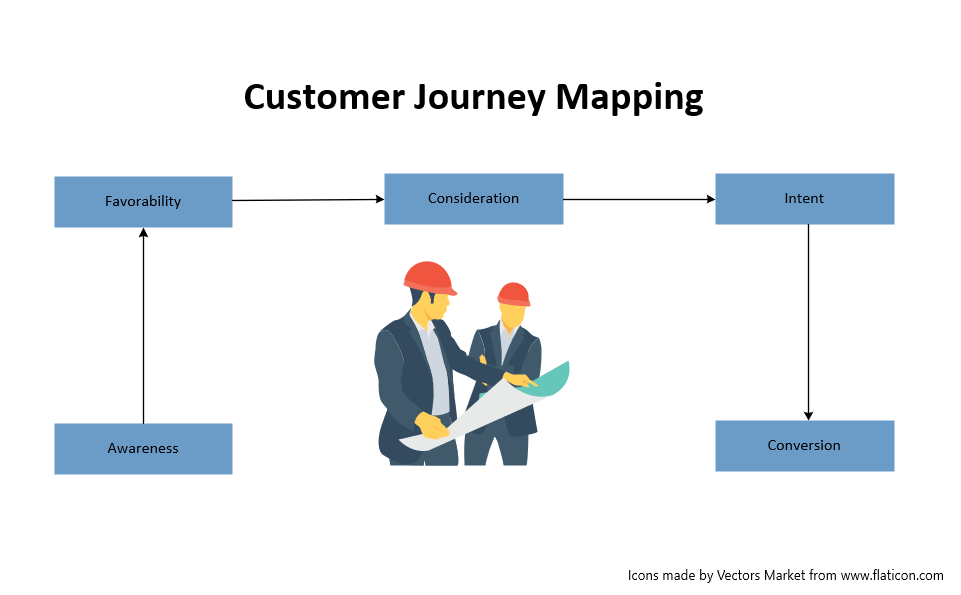
The Customer Journey Map is a technique to understand what motivates customers, what their needs are, why they hesitate or act. Although most companies are quite good at collecting data about their customers, data alone is not suited to communicate structured experiences that the customer has experienced. A structured approach is the Customer Journey Map.
The Customer Journey Map uses storytelling and visualization to illustrate a customer's relationship with a company over a period of time. The story is told from the customer's perspective, providing an insight into the customer's overall experience. It helps the product or service provider's team better understand and solve the customer's needs and problems. In other words, mapping the customer journey allows the company to see how a product or brand first appeals to a potential customer and then moves through the touch points of the entire sales process.
The Customer Journey takes a company's product through all available channels along various touch points until it executes a desired target action. The customer journey can also extend over longer periods of time. The most important target actions are purchases, orders or inquiries. Possible touchpoints are any type of contact point between the customer and the company, from classic advertising (ads, TV or radio spots, etc.) through online marketing activities to the opinion of a friend or information on rating pages. Available channels are telephone, web, branch, marketing communication and service interactions.
For example, the Customer Journey can be divided into these 5 phases:
-
Awareness - Awareness of the product/service/brand is awakened (inspiration)
-
Favorability - The interest in the product/service/brand is increased (favouring)
-
Consideration - The customer considers the target action (request)
-
Intent - The target action becomes concrete (impulse)
-
Conversion - The defined target action is executed.
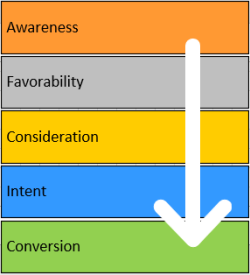
These phases form a process in themselves whereby a general interested party or customer or a specific target group is the actor (so-called "personas" as fictitious personal descriptions of potential customers are suitable tools here).
These phases can then be used to link essential characteristics:
-
Activities: What does the persona do during the phase (reads news on the Internet, uses social media channels, asks third parties about their experience, etc.)?
-
Touchpoints: What interaction possibilities are there between the prospective customer and the company and its products, employees, etc. (e.g. he looks at the website, listens to a radio spot, reads a newspaper article about the product or an evaluation on the Internet, visits a dealer, calls the hotline, tests the product, etc.)?
-
Experience: What are the customer's experiences in interacting with the company, the products or services; what is the qualitative and quantitative feedback of the prospective customer in the respective phase of the respective interaction?
-
Potentials: This is about identifying opportunities for improvement to improve the customer experience; it can be gaps in support or challenges that the customer faces during an interaction at a touchpoint
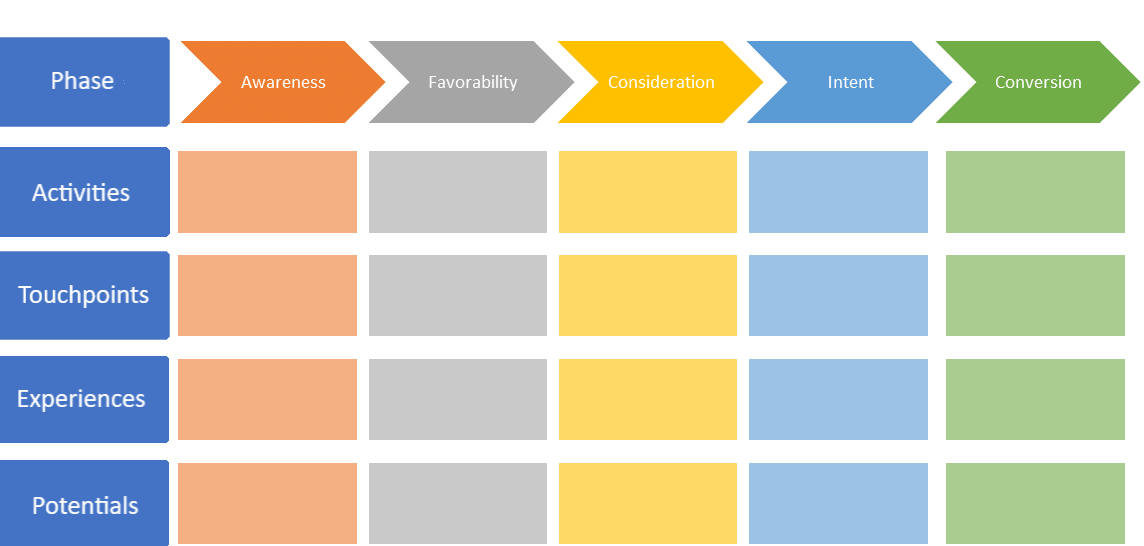
Customer Journey Mapping as a Use Case for Quam
The individual phases of the Customer Journey Mapping together form a process that can be displayed in Quam and easily visualized thanks to the integration of Microsoft Visio. The respective phases „Awareness“, „Favorability“, „Consideration“, „Intent“ and „Conversion“ as well as „Advocacy“ represent individual process elements within the process group "Customer Journey".
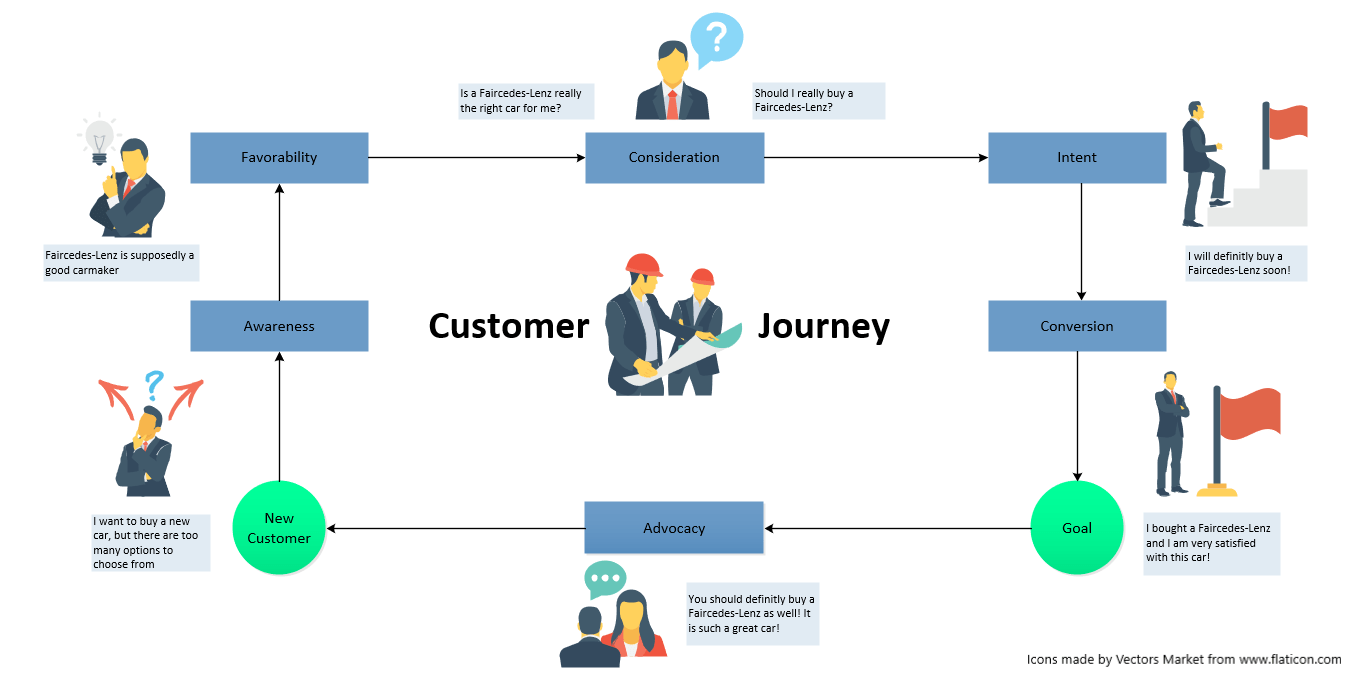
Within these individual phases, further smaller processes are created, which are also represented by Visio and can be directly connected to the higher-level process and the assigned resources, persons and IT systems through the functionalities of the Quam.
The individual phases are linked to the required resources via the characteristics of the Customer Journey, which can be created as resource groups and extended from there to include the required individual resources. From the resource groups „Activities“, „Touchpoints“, „Experiences“ und „Potentials“, the individual required resources and IT systems can then be assigned directly from Quam to the respective phases of the customer journey or the respective processes within these phases.
Every aspect of your customer interactions can thus be directly linked to your personal processes to ensure better interaction with your customers and optimize the customer experience.
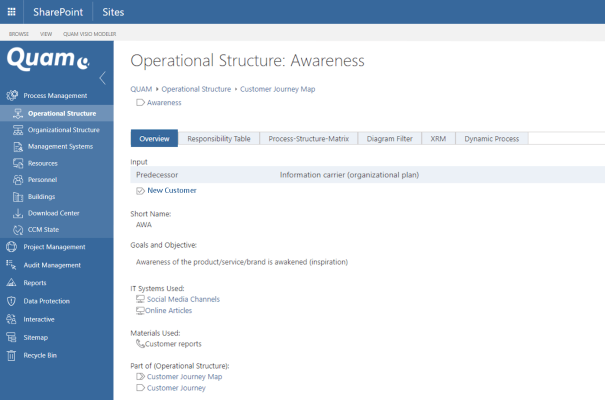
Application possibilities of Customer Journey Mapping
Change Management
Every step within the processes of your company can be questioned and improved. The Customer Journey Map makes it possible for you to recognize these points within your processes, to understand the existing improvement potential and finally to optimize your processes step by step. Without a continuous improvement of your own processes, neither good customer relationships nor a long existence on the market can be guaranteed.
Organizational Management
With the data collected about your customers' experiences with your company/product/service, it is possible to provide your company with a better overview of new, innovative solutions. Innovations are only preferred to "well-tried" solutions with a certain degree of overview and information. The Customer Journey Map enables them to deliver this level of visibility to their employees and make them more open to change.
Risk- and Compliance-Management
A large number of processes in the area of customer interaction are always associated with certain risks. The Customer Journey Map is a means of making these critical processes more transparent. Risks such as dwindling customer interest or compliance violations within your organization can be identified at an early stage and resolved before they become a serious problem.
You will find further possibilities of using Quam in our application cases!




